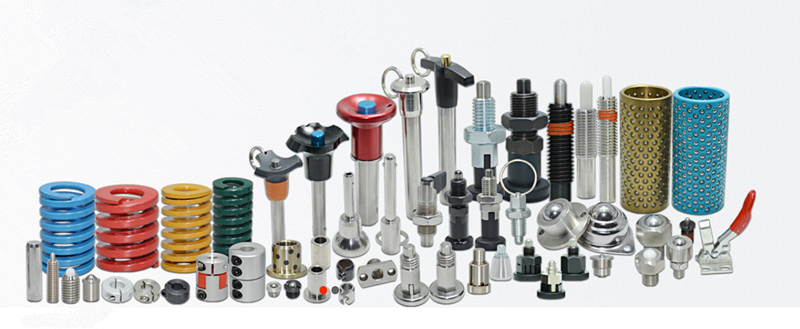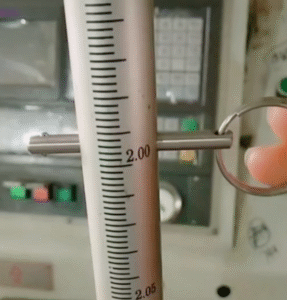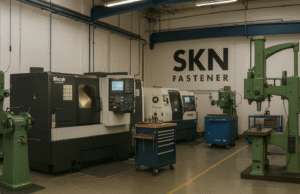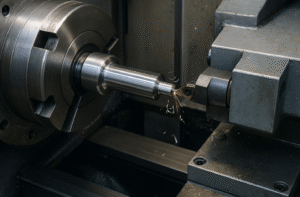A Simple Guide to the Mechanism, Design, and Industrial Benefits
Quick release pins are a small component with a big role in industrial efficiency. Commonly used in sectors ranging from aerospace and automotive to manufacturing and medical equipment, these pins allow users to lock, release, and realign components in seconds—without tools, threading, or complicated hardware.
But how do quick release pins actually work? In this article, we’ll break down the internal mechanics, types of locking systems, and what makes them such a reliable solution for fast, secure fastening.
¿Qué es un pasador de liberación rápida?
A quick release pin is a mechanical fastener that enables rapid and repeatable connection or disconnection between components. Unlike standard bolts or screws, it does not require tightening or threading—making it ideal for systems that require frequent adjustment or fast removal.
Most quick release pins operate with a spring-loaded internal mechanism that allows them to lock securely into position, and then be released with a simple action—such as pressing a button, pulling a ring, or twisting a handle.
The Core Working Principle
At its heart, a quick release pin is built around one main idea:
➡️ Hold firm when inserted, release fast when triggered.
This is made possible through a few key internal elements:
Eje del pasador: The cylindrical body of the pin, usually made from stainless steel or alloy steel.
Locking Element: Typically, small balls, a plunger, or detent mechanism housed near the tip of the pin.
Spring System: A built-in spring applies outward pressure to the locking element, so it stays engaged unless retracted.
Release Mechanism: A button, handle, or ring that, when activated, retracts the locking element and allows the pin to be removed.
This mechanism ensures the pin cannot be pulled out accidentally—it stays in place until the user intentionally releases it.
Types of Quick Release Pin Locking Mechanisms
1. Ball Lock System
This is the most common and widely used design. Near the tip of the pin, two or more bolas de acero are seated inside holes in the shaft. An internal spring pushes a tapered plunger forward, which forces the balls outward when inserted into a hole. Once engaged, the balls prevent the pin from backing out.
To release, the user presses a button or pulls a ring at the handle. This retracts the plunger, allowing the balls to collapse inward—and the pin slides out freely.
Advantages:
Gran capacidad de carga
Positive locking feedback
Secure in high-vibration environments
Common Uses: Aerospace tooling, robotic arms, heavy machinery
2. Push Button Mechanism
Instead of using locking balls, a push button pin uses an internal plunger system. When not pressed, the pin stays extended and locked in position. When the button is pressed, the internal shaft retracts, allowing the pin to be inserted or removed.
This design is especially suitable for compact or flush-mount designs, where handle clearance is limited.
Advantages:
Low-profile head
Manejo con una sola mano
Aesthetic and ergonomic
Common Uses: Medical devices, electronic enclosures, modular displays
3. T-Handle and Ring Handle Pins
The working principle is often similar to ball lock or detent systems, but the handle shape allows for better grip and control. These are used in industrial setups where users need more torque or force during removal or alignment.
How They Lock in Place
Once inserted, the quick release pin locks itself mechanically through:
En expansion of locking balls against the wall of the mating hole
Or the engagement of an internal catch or notch that resists outward movement
As a result, the pin remains secure under load, vibration, or movement, and does not require threading, washers, or separate fasteners.
How They Release
Release is intentionally simple and fast, typically using:
A push-button at the top
A pull-ring attached to a cable or handle
Twist handles (in some safety-lock designs)
Once the release action is triggered, the internal spring pulls the locking element inward, freeing the pin. The entire process takes less than a second—making quick release pins ideal for high-frequency operations like tool changes, alignment adjustments, or maintenance.
Industrial Advantages of Quick Release Pins
| Advantage | Descripción |
|---|---|
| Fast Installation | Insert and lock in one motion—no tools or threading required. |
| Repeatable Usage | Designed for frequent connect/disconnect cycles without damage. |
| Safe & Secure | Internal locking ensures the pin won’t come loose accidentally. |
| Customizable | Available in a variety of sizes, handle types, materials, and locking styles. |
| High Load Capacity | Many designs handle heavy shear loads and perform in demanding environments. |
Aplicaciones comunes
Quick release pins are used wherever fast, reliable connection is needed. Some examples include:
Aircraft maintenance platforms and tooling assemblies
Heavy equipment such as tractors, loaders, or cranes
Marine hardware, including adjustable boat fittings or ladders
Medical trolleys and modular hospital furniture
Industrial jigs and fixtures in manufacturing lines
Automotive parts like racing harness locks or removable panels
Materials and Finishes That Affect Performance
The material and surface treatment of a quick release pin directly affect its durability, corrosion resistance, and mechanical performance.
Common Materials:
Acero inoxidable (304/316): Corrosion-resistant, marine/medical grade
Alloy Steel: High strength, heat-treated for tough conditions
Aluminio: Lightweight and corrosion-resistant for aerospace
Surface Treatments:
Cincado: Provides basic corrosion protection
Pasivación: Improves corrosion resistance in stainless steel
Anodizing (for aluminum): Enhances durability and color options
Óxido negro: Offers minimal corrosion protection, used for aesthetic or low-moisture environments
How to Ensure Proper Use
To get the most from your quick release pins:
Match diameter and hole size precisely. Too much play reduces holding strength.
Check shear load specs to ensure safe usage under expected force.
Ensure clean mating holes—dirt or debris can prevent proper locking.
Use safety clips or retention cables in mobile or high-risk applications.
Inspect periodically for spring fatigue or mechanical wear.





